Although my family eats a whole foods, low-sugar diet, we’ve had our share of dental challenges, particularly the kids. Ella had to have restorative work on several of her molars before the age of four, and Everett’s teeth have some degree of enamel decay on most surfaces.
My take on dental health is like my view of health in general – it matters what you put into your body and how you care for yourself, but also, sometimes things just happen. Our kids don’t drink sugary beverages, we don’t give them candy or an excess of dried fruits, we floss and brush, and yet…
When Ella’s dental problems first presented themselves, we went searching for information as to how to best approach dental health. There is a lot of conflicting information out there, and ultimately, you have to choose what feels best for your own family. We’ve settled on a combination of a whole foods diet, supplements, and preventative dental care that is working well to keep the kids’ teeth stable. In our diet, we emphasize lots of vegetables, pasture-raised meats, raw milk and butter, fruit, and some whole grains. As a family, we love dessert, and while we use cane sugar, we also try to make use of honey and sorghum.
I take high quality multivitamins and Green Pastures Fermented Fish Oil and Butter Oil supplements. The kids take cod liver oil and our entire family takes supplements from The Dental Essentials which comes in a tablet for the adults, and a liquid formula for the kids. Their supplements are specifically formulated to help reduce cavities, with vitamins and minerals such as Calcium, Phosphorous, Vitamin D3 and K2. (The Dental Essentials offers Homestead Honey readers a 15% discount with the code “Homestead” if you want to try their product.)
I’ve gone back and forth between homemade and store-bought toothpaste, and recently resumed making my own. I’m really loving this recipe. It makes my teeth feel clean and fresh and it tastes amazing! I derived the recipe from a number of recipes that I found online, but particularly from this one from Wellness Mama.
Ingredients
1 tsp Calcium Carbonate powder
1 tsp Food Grade Diatomaceous Earth
1 tsp Bentonite Clay
3 tsp Xylitol
3 – 5 tsp Unrefined Coconut Oil
20 drops Trace Minerals
20 drops Essential Oils of choice (I used 12 Peppermint, 5 Clove, and 3 Eucalyptus for the adult batch and 10 Peppermint, 10 Sweet Orange for the kids)
To Make:
1) Combine the dry ingredients in a small bowl. (Diatomaceous earth should not be inhaled, so stir slowly and carefully).
2) Add coconut oil until you’ve reached a desired consistency.
3) Stir in essential oils and trace minerals, and store in a container of choice. Keep in mind that coconut oil will liquify above room temperature, so be sure your container closes tightly.
Happy brushing! If you try the recipe, please let me know how you like it!
Make Your Own Homemade Toothpaste
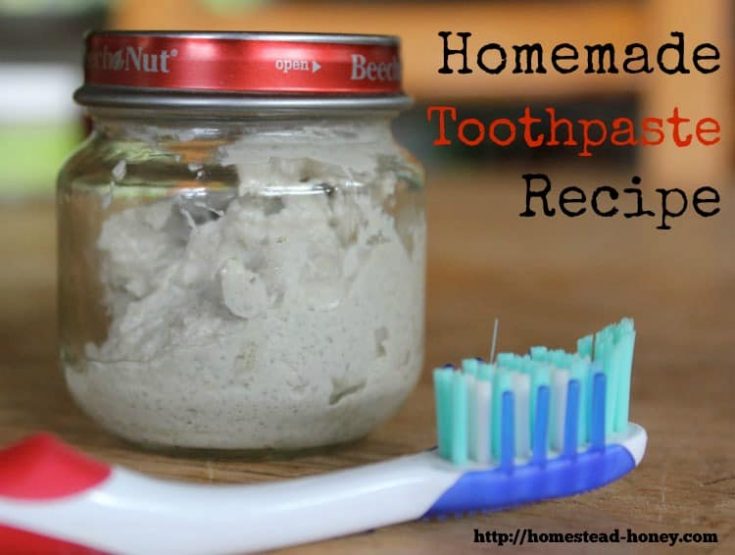
A recipe for homemade toothpaste, using coconut oil, bentonite clay, essential oils, and trace minerals.
Ingredients
- 1 tsp Calcium Carbonate powder
- 1 tsp Food Grade Diatomaceous Earth
- 1 tsp Bentonite Clay
- 3 tsp Xylitol
- 3 – 5 tsp Unrefined Coconut Oil
- 20 drops Trace Minerals
- 20 drops Essential Oils of choice (see notes)
Instructions
- Combine the dry ingredients in a small bowl. (Diatomaceous earth should not be inhaled, so stir slowly and carefully).
- Add coconut oil until you’ve reached a desired consistency.
- Stir in essential oils and trace minerals, and store in a container of choice. Keep in mind that coconut oil will liquify above room temperature, so be sure your container closes tightly.
Notes
I used 12 Peppermint, 5 Clove, and 3 Eucalyptus for the adult batch and 10 Peppermint, 10 Sweet Orange for the kids

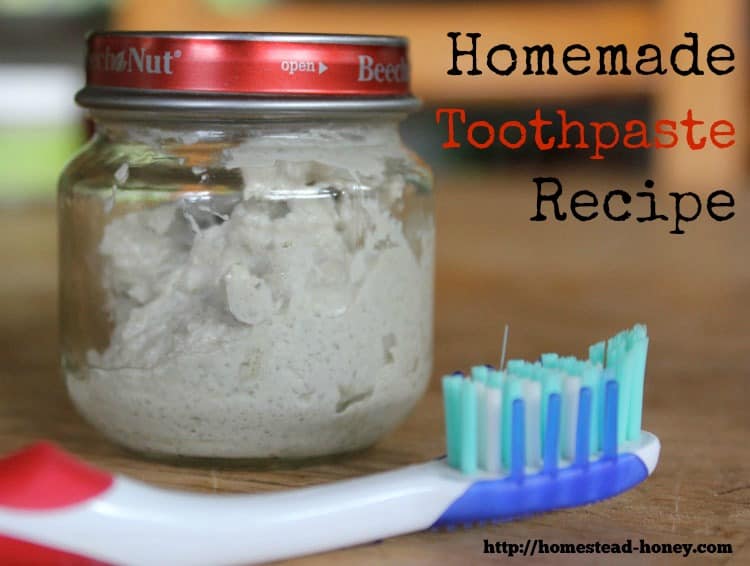
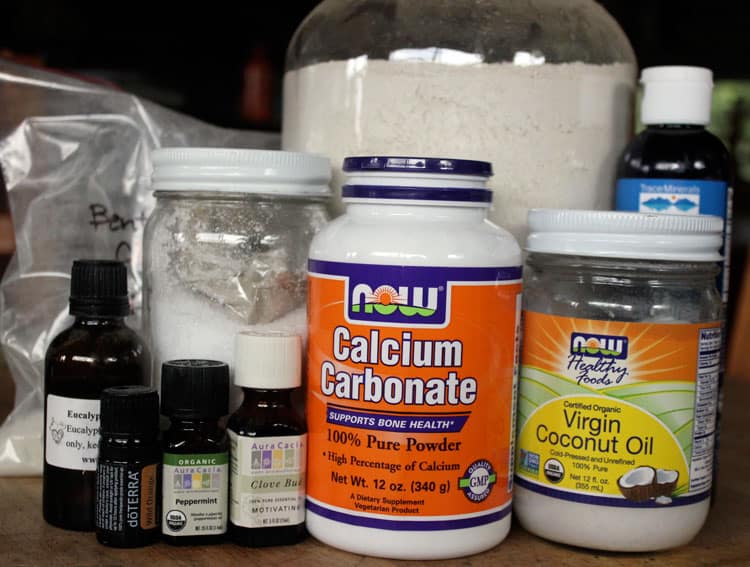

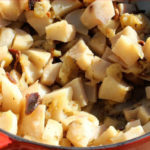
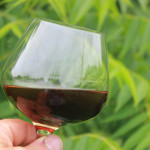
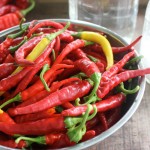

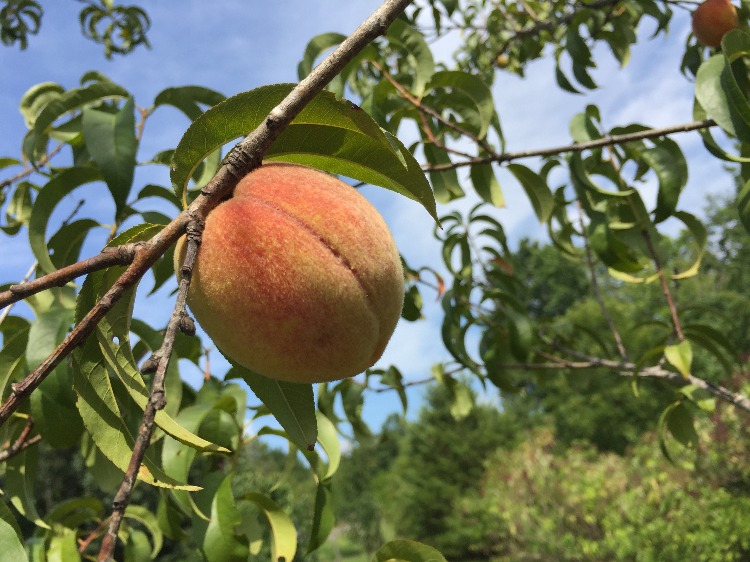


I have been doing baking soda and essential oils for our toothpaste. I am wondering how is the best way to apply your toothpaste recipe to the brush? I am assuming in the summer it would be liquid, in the winter solid. What have you found to be the best application method for each form?
In both cases, I dip into the jar and just scoop out a bit of toothpaste with my toothbrush. It’s not the most elegant solution, but it works!
It’s been a while since you posted this, so I hope you don’t mind a question.
I tried the Wellness Mama recipe and found our toothpaste to be too oily and salty. It’s warm here and the coconut oil overwhelmed the toothpaste. I don’t mind a liquid toothpaste, but it wasn’t too enjoyable.
So I’m going to try your recipe instead. Do you add the xylitol without crushing it into a powder, or does yours come in a powder form? I used a mortar and pestle and still didn’t crush it enough, so it wasn’t evenly distributed in the toothpaste and settled at the bottom.
Thanks!
Hi Carla, I’m always happy to answer questions!
Yes, the coconut oil does melt in the warm weather and can make the recipe a bit soupy. Perhaps it’s because I add bentonite clay, but the liquidity is never unbearable to me.
I buy the xylitol and use it as is. So it has a slight crunch to it, but that thrills my kids. I’ve never noticed it settling down to the bottom though.
I was noticing that Wellness Mama’s recipe uses quite a bit more Calcium than my recipe. That might affect taste or texture also.
I usually make up very small batches. You could try to play with the amount of coconut oil – maybe add a bit less!
Good luck!
Teri
So, if we have a well we shouldn’t need to add trace minerals? What are they and how much of each would we need? We had our well tested and it’s clean and pure, tho hard water. So I know it’s got SOME type of minerals in it. Like the lime that leaves nasty deposits everywhere… I should have asked for a print-out but didn’t think to when they said it was pure.
I just came across your toothpaste recipe and have not tried it yet. I would however make one suggestion. Since Xylitol is good for dental health, (it helps prevent cavaties) I would include that as well.
I first learned about Xylitol from my dentist, and did include it in this recipe. I hope you get a chance to try the recipe!
What are the Trace Minerals?
Thank you.
We recently learned that filtering rain water does not give us minerals that would come from ground water such as springs or wells. So, although we get a lot of good trace minerals from our whole foods diet, we’ve also been adding trace minerals to our water, and I include them in this toothpaste recipe as well. I use the brand “ConcenTrace” and it contains a blend of a number of trace minerals that our bodies need.
H I love your blog although I am not a homesteader. I wish I was. I make my own tooth paste but I don’t use some of the ingredients you do. I was wondering what yours taste like. I have three kids who love my tooth paste but I’m looking to change it a bit adding some minerals and calcium. I make mine with baking soda and as long as it has a mild sweet taste with xylitol they are ok with it. Does yours have a different taste adding your ingredients? Thanks, Anna
Hi Anna, Thanks so much for reading!
The addition of xylitol and essential oils really makes the toothpaste tasty. My six year old daughter enjoys the flavor, although my 3 year old finds the peppermint essential oil to be a bit too intense. I need to remake it for him with just the sweet orange oil. I don’t think you’d find much of a change in flavor by adding the minerals and calcium, if your kids are already okay with the taste of baking soda. Hope it goes well for you!